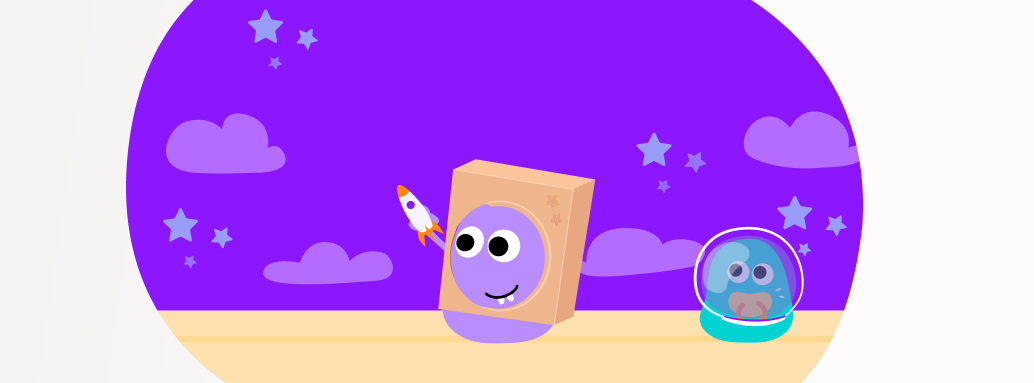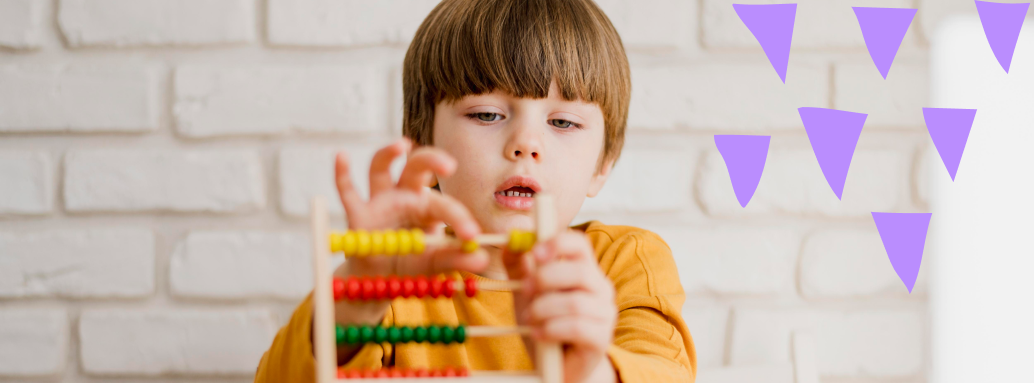Ever stared into a child's eyes and seen the unbridled wonder and creativity that seem to radiate from them? How, you might wonder, can we nourish that spark and let it flourish?
Children possess an innate capacity for creativity and imagination that lays the foundation for their future growth and learning. As parents and educators, it's essential to nurture these qualities from an early age. This article delves into the significance of fostering creativity and imagination in young children and offers practical strategies to cultivate these traits.
Understanding Creativity and Imagination
What is Creativity?
Creativity involves generating novel ideas, concepts, and solutions through original thinking. It encourages children to explore, experiment, and think beyond the ordinary, leading to innovative perspectives and outcomes.
The Role of Imagination
Imagination is the ability to create mental images, scenarios, and ideas that aren't present in reality. It enables children to develop empathy, consider different viewpoints, and engage in imaginative play that enhances their cognitive and emotional development.
Benefits of Fostering Creativity
Cognitive Development
Nurturing creativity enhances cognitive skills such as problem-solving, critical thinking, and adaptability. It encourages children to explore various possibilities and analyze outcomes, contributing to their intellectual growth.
Emotional Expression
Creativity provides a constructive outlet for emotional expression. Children can convey feelings, fears, and aspirations through art, music, and storytelling, aiding in emotional development and self-awareness.
Problem-Solving Skills
Engaging in creative activities requires finding solutions to challenges and overcoming obstacles. These experiences foster resilience and resourcefulness, vital attributes for effective problem-solving in various life situations.
The Importance of Creativity and Imagination
Building Blocks of Creative Minds
Creativity and imagination aren't just about painting pretty pictures or weaving wild stories. They are fundamental skills that help children process the world around them. From understanding complex emotions to problem-solving, a child's creative abilities pave the way for a life of innovation and adaptability.
Long-Term Benefits of Fostering Creativity
A creative child often grows into an adult who thinks outside the box. This means better problem-solving skills, more adaptability in a fast-changing world, and even improved mental well-being. Imagine what our world could be if we nurtured these talents from the start?
Simple Strategies to Encourage Creativity
Create an Inspiring Environment
Think of the mind as a plant. With the right soil, water, and sunlight, it'll bloom. A space filled with colorful books, diverse toys, and art supplies can spark a child's imagination.
Open-Ended Play
Remember the times when a cardboard box became a spaceship? Children don’t always need structured play. Sometimes, leaving them with open-ended materials lets their imagination run wild!
Encourage Artistic Expression
Whether it's drawing, painting, dancing, or singing, artistic activities allow children to express themselves freely. Who knows, you might have a little Picasso on your hands!
Storytelling and Pretend Play
Bedtime stories or play-acting are more than just fun activities. They help children understand narratives, build empathy, and, of course, ignite creativity.
Creating a Supportive Environment
Encouraging Play and Exploration
Play is the cornerstone of creativity. Encourage unstructured play that allows children to explore their interests, experiment, and discover new concepts independently.
Providing Open-Ended Materials
Supply a variety of open-ended materials like building blocks, art supplies, and natural objects. These materials stimulate imagination as children can use them in diverse ways without specific instructions.
Allowing Risk-Taking
Support children in taking creative risks without fear of failure. Encourage them to experiment with different ideas, reassuring them that mistakes are valuable learning opportunities.
Nurturing Creativity in Daily Activities
Art and Crafts
Engage children in art and craft projects that encourage self-expression and experimentation. These activities promote fine motor skills and allow children to bring their visions to life.
Storytelling and Pretend Play
Storytelling and pretend play transport children to imaginative worlds. Encourage them to create their narratives, fostering language development and imaginative thinking.
Outdoor Adventures
Nature offers endless opportunities for creative exploration. Outdoor activities like scavenger hunts and nature walks stimulate children's curiosity and imagination.
Balancing Screen Time
In today's digital age, finding a balance between screen time and creative play is crucial. Limit screen exposure and encourage activities that involve physical engagement and hands-on learning.
Fostering Collaboration
Collaborative activities, such as group projects and cooperative games, encourage children to share ideas and build on each other's creativity. Collaboration nurtures communication skills and diverse perspectives.
Encouraging Curiosity
Foster a sense of wonder by encouraging questions and exploration. Curiosity drives children to seek answers, learn about the world around them, and develop a thirst for knowledge.
Being a Role Model
Demonstrate creativity in your own life, showing children that it's a valuable trait for all ages. Share your creative processes, from brainstorming to problem-solving, to inspire their creative journey.
The Power of Encouragement
Provide positive reinforcement for children's creative efforts. Celebrate their achievements, no matter how small, and offer genuine praise to boost their confidence and motivation.
Embracing Mistakes
Teach children that mistakes are natural and essential for growth. Encourage a mindset that embraces challenges and sees setbacks as opportunities to learn and improve.
Recognizing and Celebrating
Acknowledge and celebrate each child's unique creative expressions. Display their artwork, showcase their imaginative stories, and create an environment that values their individuality.
The Role of Parents and Educators
Parents and educators play a vital role in fostering creativity and imagination. By providing a nurturing and stimulating environment, offering guidance, and promoting open-ended activities, they pave the way for children's holistic development.
Be a Role Model
Children often mirror adults. So, grab that paintbrush or guitar and show them that creativity has no age limit.
Positive Reinforcement
Celebrate their little masterpieces. Even if it's just a doodle, positive feedback can boost their confidence to explore further.
Avoiding Over-structuring
Remember, not every second of their day needs to be planned. Free time can be a goldmine for spontaneous creativity.
Avoiding Creativity Killers
Over-reliance on screens, fear of getting messy, or constant structured activities can hamper creativity. Striking a balance is key. Let them be kids!
Conclusion
Cultivating creativity and imagination in young children is a rewarding journey that shapes their cognitive, emotional, and social development. By creating an environment that encourages exploration, risk-taking, and self-expression, parents and educators lay a strong foundation for a future generation of innovative thinkers and problem solvers.
Fostering creativity and imagination in young children is a journey, not a destination. With patience, love, and a sprinkle of fun, we can create an environment where their imaginations soar.
FAQs
-
Why is creativity important in early childhood? Creativity aids in emotional development, cognitive skills, and prepares them for future challenges.
-
How can schools promote creativity? Schools can integrate arts into the curriculum, encourage open-ended questions, and provide diverse resources.
-
Is there such a thing as too much creativity? It's about balance. While creativity is wonderful, structure and discipline are also essential for holistic development.
-
How can technology be used to foster creativity? Technology, when used wisely, can be a powerful tool. Apps that encourage storytelling, digital art platforms, and interactive games can stimulate creativity.
-
What if my child doesn't seem interested in artistic activities? Creativity isn't just about art. Exploration, curiosity, and problem-solving are all parts of the creative spectrum. Find what ignites their passion!
Billing, Invoicing Automation & Smart Finances
Communication & Engagement
Child Development & Progress
Waitlist, Forms & Attendance
Effortless Team Management
Daily Updates That Matter
Templates & Printables
Blogs
Webinars
Case Studies & Testimonials
FAQs
Help Center



